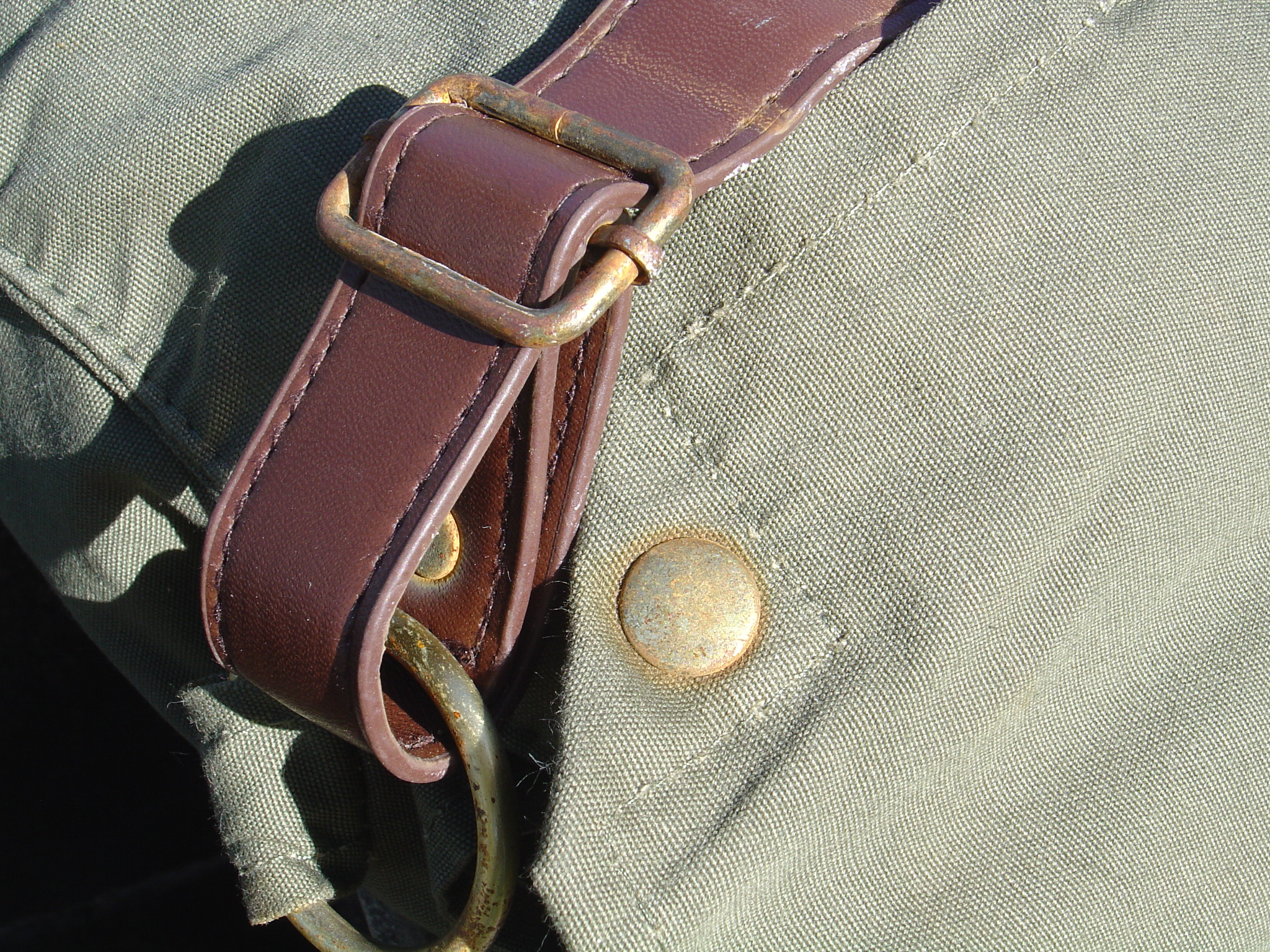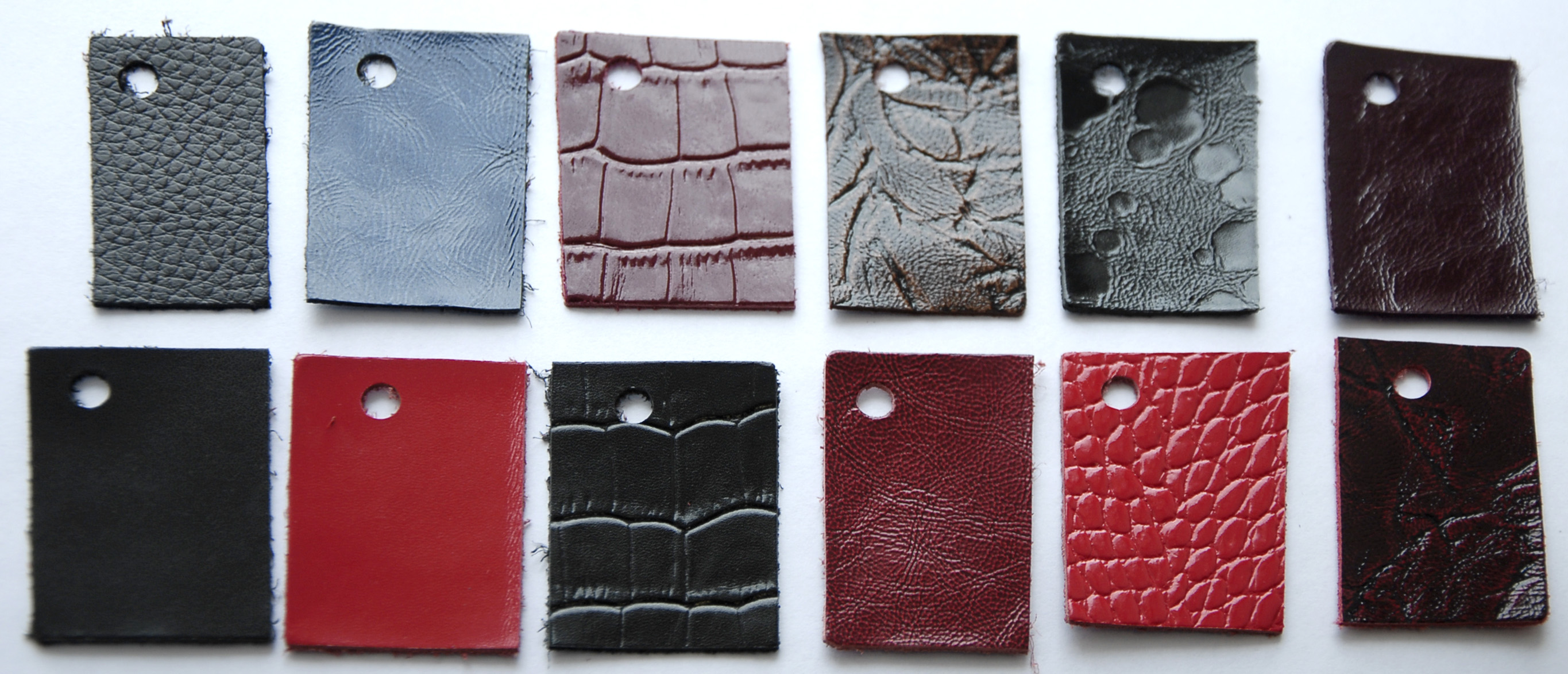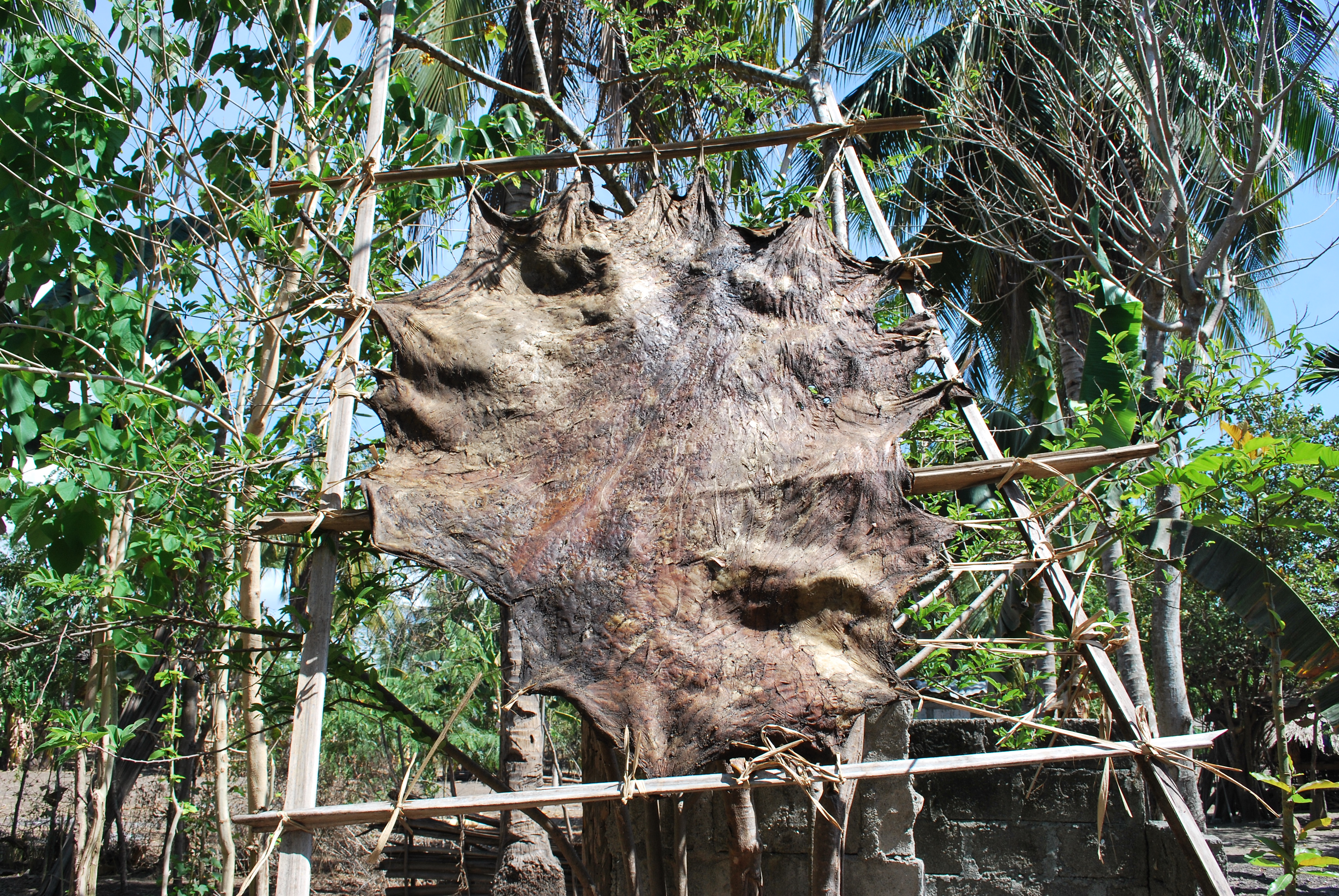|
Bicast Leather
Bicast leather (also spelled as bi-cast leather or bycast leather) is a material made with a split leather backing covered with an embossed layer of polyurethane or vinyl. Bicast leather was originally made for the apparel industry for glossy shoes, and was later adopted by the furniture industry. Production and features The hide material used in the making of bicast is usually a portion of the fibrous, lower grade of leather that remains when the higher-grade grain layer is split off. Bicast leather is produced by building up a layer of plastic (typically polyurethane) on top of an embossed release paper known as ''casting paper''. The embossing is usually giving the appearance of top grain leather, although it may be smooth depending on the desired finish. The plastic layer may optionally include: pigment, foams of various consistencies, and adhesives. Split leather is then applied and pressed onto the plastic, which may have been dried. After the resultant bicast leather ... [...More Info...] [...Related Items...] OR: [Wikipedia] [Google] [Baidu] |
Split Leather
Leather is a strong, flexible and durable material obtained from the tanning (leather), tanning, or chemical treatment, of animal skins and hides to prevent decay. The most common leathers come from cattle, sheep, goats, equine animals, buffalo, pigs and hogs, and aquatic animals such as seals and alligators. Leather can be used to make a variety of items, including clothing, footwear, handbags, furniture, tools and sports equipment, and lasts for decades. Leather making has been practiced for more than 7,000 years and the leading producers of leather today are China and India. Animal rights groups claim that modern commercial leather making and the consumption of its products is unethically killing animals. According to the Life-cycle assessment, life-cycle assessment (LCA) report for the United Nations Industrial Development Organization, 99% of the raw hides and skins used in the production of leather derive from animals raised for meat and/or dairy production. Critics o ... [...More Info...] [...Related Items...] OR: [Wikipedia] [Google] [Baidu] |
Polyurethane
Polyurethane (; often abbreviated PUR and PU) refers to a class of polymers composed of organic chemistry, organic units joined by carbamate (urethane) links. In contrast to other common polymers such as polyethylene and polystyrene, polyurethane is produced from a wide range of starting materials. This chemical variety produces polyurethanes with different chemical structures leading to many List of polyurethane applications, different applications. These include rigid and flexible foams, varnishes and coatings, adhesives, Potting (electronics), electrical potting compounds, and fibers such as spandex and Polyurethane laminate, PUL. Foams are the largest application accounting for 67% of all polyurethane produced in 2016. A polyurethane is typically produced by reacting an isocyanate with a polyol. Since a polyurethane contains two types of monomers, which polymerize one after the other, they are classed as Copolymer#Alternating copolymers, alternating copolymers. Both the isocy ... [...More Info...] [...Related Items...] OR: [Wikipedia] [Google] [Baidu] |
Apparel
Clothing (also known as clothes, apparel, and attire) are items worn on the body. Typically, clothing is made of fabrics or textiles, but over time it has included garments made from animal skin and other thin sheets of materials and natural products found in the environment, put together. The wearing of clothing is mostly restricted to human beings and is a feature of all human societies. The amount and type of clothing worn depends on gender, body type, social factors, and geographic considerations. Garments cover the body, footwear covers the feet, gloves cover the hands, while hats and headgear cover the head. Eyewear and jewelry are not generally considered items of clothing, but play an important role in fashion and clothing as costume. Clothing serves many purposes: it can serve as protection from the elements, rough surfaces, sharp stones, rash-causing plants, insect bites, by providing a barrier between the skin and the environment. Clothing can insulate against c ... [...More Info...] [...Related Items...] OR: [Wikipedia] [Google] [Baidu] |
Furniture
Furniture refers to movable objects intended to support various human activities such as seating (e.g., stools, chairs, and sofas), eating (tables), storing items, eating and/or working with an item, and sleeping (e.g., beds and hammocks). Furniture is also used to hold objects at a convenient height for work (as horizontal surfaces above the ground, such as tables and desks), or to store things (e.g., cupboards, shelves, and drawers). Furniture can be a product of design and can be considered a form of decorative art. In addition to furniture's functional role, it can serve a symbolic or religious purpose. It can be made from a vast multitude of materials, including metal, plastic, and wood. Furniture can be made using a variety of woodworking joints which often reflects the local culture. People have been using natural objects, such as tree stumps, rocks and moss, as furniture since the beginning of human civilization and continues today in some households/campsites. Ar ... [...More Info...] [...Related Items...] OR: [Wikipedia] [Google] [Baidu] |
Release Liner
A release liner or ''release paper'' is a paper or plastic-based film sheet (usually applied during the manufacturing process) used to prevent a sticky surface from prematurely adhering. It is coated on one or both sides with a release agent, which provides a release effect against any type of a sticky material such as an adhesive or a mastic. Release liners are available in different colors, with or without printing under the low surface energy coating or on the backside of the liner. ''Release'' is separation of the liner from a sticky material; ''liner'' is the carrier for the release agent. Industry segmentation Globally there are between 400 and 500 companies involved in making or dealing with release liner products on an industrial scale. In general there are two types of companies which are manufacturing release liner. Liner producer Commercial coating companies deal with a lot of different end uses of this industry. They provide unique solutions to their customers, ba ... [...More Info...] [...Related Items...] OR: [Wikipedia] [Google] [Baidu] |
Artificial Leather
Artificial leather, also called synthetic leather, is a material intended to substitute for leather in upholstery, clothing, footwear, and other uses where a leather-like finish is desired but the actual material is cost prohibitive or unsuitable. Artificial leather is known under many names, including ''leatherette'', ''imitation leather'', ''faux leather'', ''vegan leather'', ''PU leather'', and ''pleather''. Manufacture Many different methods for the manufacture of imitation leathers have been developed. A current method is to use an embossed release paper known as ''casting paper'' as a form for the surface finish, often mimicking the texture of top-grain leather. This embossed release paper holds the final texture in negative. For the manufacture, the release paper is coated with several layers of plastic e.g. pvc or polyurethane, possibly including a surface finish, a colour layer, a foam layer, an adhesive, a fabric layer, a reverse finish. Depending on the spec ... [...More Info...] [...Related Items...] OR: [Wikipedia] [Google] [Baidu] |
Bonded Leather
Bonded leather, also called reconstituted leather, composition leather or blended leather, is a term used for a manufactured upholstery material which contains animal hide. It is made as a layered structure of a fiber or paper backer covered with a layer of shredded leather fibers mixed with natural rubber or a polyurethane binder that is embossed with a leather-like texture. It differs from bicast leather, which is made from solid leather pieces, usually from the split, which are given an artificial coating. Description Bonded leather is made by shredding leather scraps and leather fiber, then mixing it with bonding materials. The mixture is next extruded onto a cloth or paper backing, and the surface is usually embossed with a leather-like texture or grain. Color and patterning, if any, are a surface treatment that does not penetrate like a dyeing process would. The natural leather fiber content of bonded leather varies. The manufacturing process is somewhat similar to the pr ... [...More Info...] [...Related Items...] OR: [Wikipedia] [Google] [Baidu] |
Leather
Leather is a strong, flexible and durable material obtained from the tanning, or chemical treatment, of animal skins and hides to prevent decay. The most common leathers come from cattle, sheep, goats, equine animals, buffalo, pigs and hogs, and aquatic animals such as seals and alligators. Leather can be used to make a variety of items, including clothing, footwear, handbags, furniture, tools and sports equipment, and lasts for decades. Leather making has been practiced for more than 7,000 years and the leading producers of leather today are China and India. Animal rights groups claim that modern commercial leather making and the consumption of its products is unethically killing animals. According to the life-cycle assessment (LCA) report for the United Nations Industrial Development Organization, 99% of the raw hides and skins used in the production of leather derive from animals raised for meat and/or dairy production. Critics of tanneries claim that they engage in uns ... [...More Info...] [...Related Items...] OR: [Wikipedia] [Google] [Baidu] |






